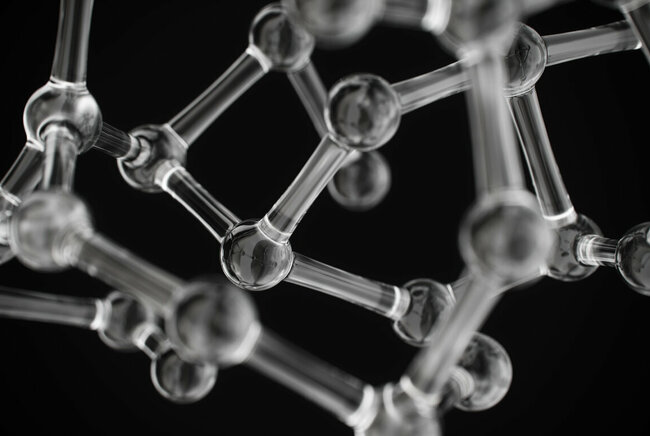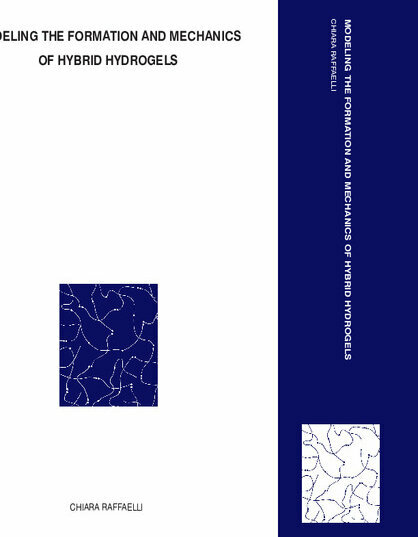Modeling the formation and mechanics of hybrid hydrogels
Chiara Raffaelli defended her PhD thesis at the Department of Applied Physics and Science Education on April 4th.

Hydrogels are swollen polymeric networks that contain a large amount of water (some with over 99% water) while maintaining a three-dimensional network structure. As they are so sparse, cells or drugs can be embedded in such hydrogels, which makes them ideal for biomedical applications. Control over mechanical properties is essential, as this affects the viability of cells in the gels. In addition, hydrogels containing reversible and irreversible crosslinks have novel properties. For her PhD thesis, Chiara Raffaelli developed a model to study the gelation and stress-relaxation of hybrid hydrogels formed from 4-armed stars whose arms can bind via covalent and reversible bonds.
Control over the mechanical properties of hydrogels such as elastic moduli and toughness is essential, mainly because the behavior and viability of cells in the gels depends on it.
Furthermore, hydrogels that contain a combination of reversible and irreversible crosslinks can exhibit novel properties, such as enhanced toughness, easier processability and even the ability to self-heal.
In her PhD thesis, Chiara Raffaelli presents a model and numerical results on the gelation and stress-relaxation of hybrid hydrogels formed from 4-armed stars whose arms can bind with a combination of 1-on-1 covalent and reversible bonds.

Shorter timescales
By replacing 50% of the crosslinks with reversible ones, Raffaelli’s study demonstrates a material that never percolates by virtue of its covalent bonds alone. In this case, the strength of the reversible bonds determines the mechanical behavior, and thus provide a guideline for the design of mechanically tunable gels based on stimuli-responsive crosslinkers.
Furthermore, Raffaelli used molecular dynamics simulations to analyze the effect of hydrophobic aggregates of reversible crosslinkers on the mechanical properties of hybrid hydrogels in which both covalent 1-on-1 click bonds and reversible crosslinks are present, and compared findings with experiments on hybrid hydrogels.
Raffaelli’s results show that the presence of these aggregates can make these gels stiffer on shorter timescales, contrary to 1-on-1 bonded gels which are always weaker than their covalent counterparts.
Her findings were in part made possible by an improved algorithm to detect percolation in periodic networks, which is presented in her thesis and which is being released as a Python package.
Title of PhD thesis: Modeling the formation and mechanics of hybrid hydrogels. Supervisors: Kees Storm and Wouter Ellenbroek.